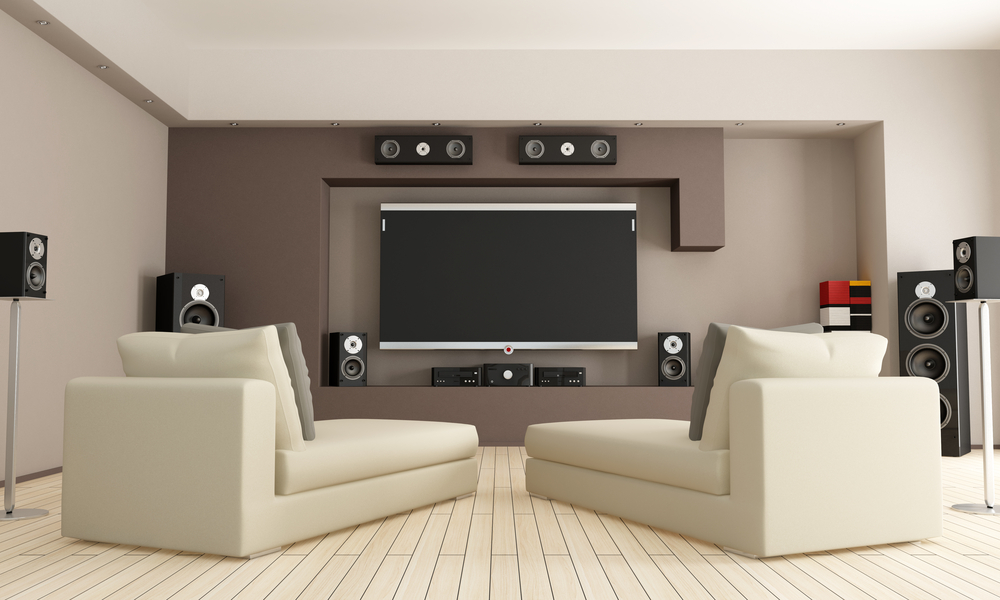The Science of Sound: Acoustics and Room Calibration

In the audio world, achieving the perfect sound can be elusive. Whether you’re a music enthusiast, a movie buff, or simply enjoying your favorite podcast, the sound quality can significantly impact your listening experience.
While high-quality speakers and amplifiers play a crucial role, another factor that often goes unnoticed but is equally important is the science of acoustics and room calibration. In the following article, experts in home audio installation in Chicago, IL, will give you a unique overview of all things acoustic. Read on!
What does room calibration do?
Before we dive into the intricacies of acoustics and room calibration, let’s address its definition. Room calibration is fine-tuning your audio system to ensure sound is reproduced as accurately as possible in your listening environments. Calibrating considers your home’s unique characteristics, such as its size, shape, furnishings, and even the materials used in construction.
Imagine you have a top-of-the-line speaker system and an extensive music library. You play your favorite track, expecting to be blown away by the richness and clarity of the sound. However, you may find that the audio falls short of your expectations; this is where Liaison’s professional acoustic calibration comes in.
It involves adjusting various audio parameters, such as equalization, phase alignment, speaker positioning, and more, to account for the acoustic properties of your room. By doing so, it aims to eliminate issues like resonance, echoes, and uneven sound distribution, allowing you to hear music, movies, and dialogues as the creators intended.
Why is room calibration necessary?
The truth is every space has its unique acoustic fingerprint. Your home’s surfaces, furnishings, and dimensions interact complexly with sound waves. For instance, hard surfaces like walls and floors can reflect sound waves, creating echoes and causing audio distortion. On the other hand, soft materials like curtains and carpets can absorb sound, potentially making the audio sound muffled.
Room calibration helps address these challenges by optimizing your audio system’s settings based on your room’s characteristics. Here’s how it works:
- Measurement: The process typically begins with a calibrated microphone and specialized software. The microphone is placed at various listening positions within the room, and the software analyzes the audio signals it captures.
- Analysis: The software then processes the data, identifying issues like frequency response irregularities, phase inconsistencies, and delays caused by the room’s dimensions.
- Adjustment: Based on the analysis, the system makes precise adjustments to equalization settings, speaker levels, and time delays to correct these issues.
- Verification: After adjustments are made, the process is often repeated to verify that the changes have improved the audio quality.
Sound and acoustics
Sound is a complex phenomenon that travels in waves through the air. These waves can reflect, refract, or be absorbed when they encounter surfaces. This behavior is the foundation of acoustics, studying how sound behaves in various environments.
One fundamental concept in acoustics is the frequency of sound waves, which determines the pitch of the sound we hear. Lower-frequency sounds, like the deep bass in your favorite music, have longer wavelengths, while higher-frequency sounds, such as the tinkling of a piano, have shorter wavelengths.
In a room, these sound waves bounce around, creating a mix of direct sound (from the speakers) and reflected sound (off walls, ceilings, and objects). The interaction of these sound waves can lead to a phenomenon known as standing waves, where specific frequencies become amplified while others are canceled out. This results in unevenly distributed sound and can lead to audio distortion.
Room calibration aims to mitigate these issues by precisely measuring and adjusting the audio system to minimize the impact of standing waves and other acoustic anomalies. Through careful measurement and analysis, room calibration systems can optimize the frequency response, ensuring that you hear a more accurate representation of the audio content.
Who offers the quality home audio installation in Chicago, IL?

As an award-winning company specializing in cutting-edge smart home automation technology, Liaison Technology Group caters to both residential and commercial clients seeking seamless integration of innovative solutions into their spaces across Chicagoland. Whether it’s hidden audio solutions that effortlessly blend high-quality sound into your environment, choosing the best home speaker systems, or state-of-the-art wireless audio systems that provide ultimate flexibility and convenience, we’ve got you covered. Embrace the future of audio entertainment and let your music flow freely throughout your home.
